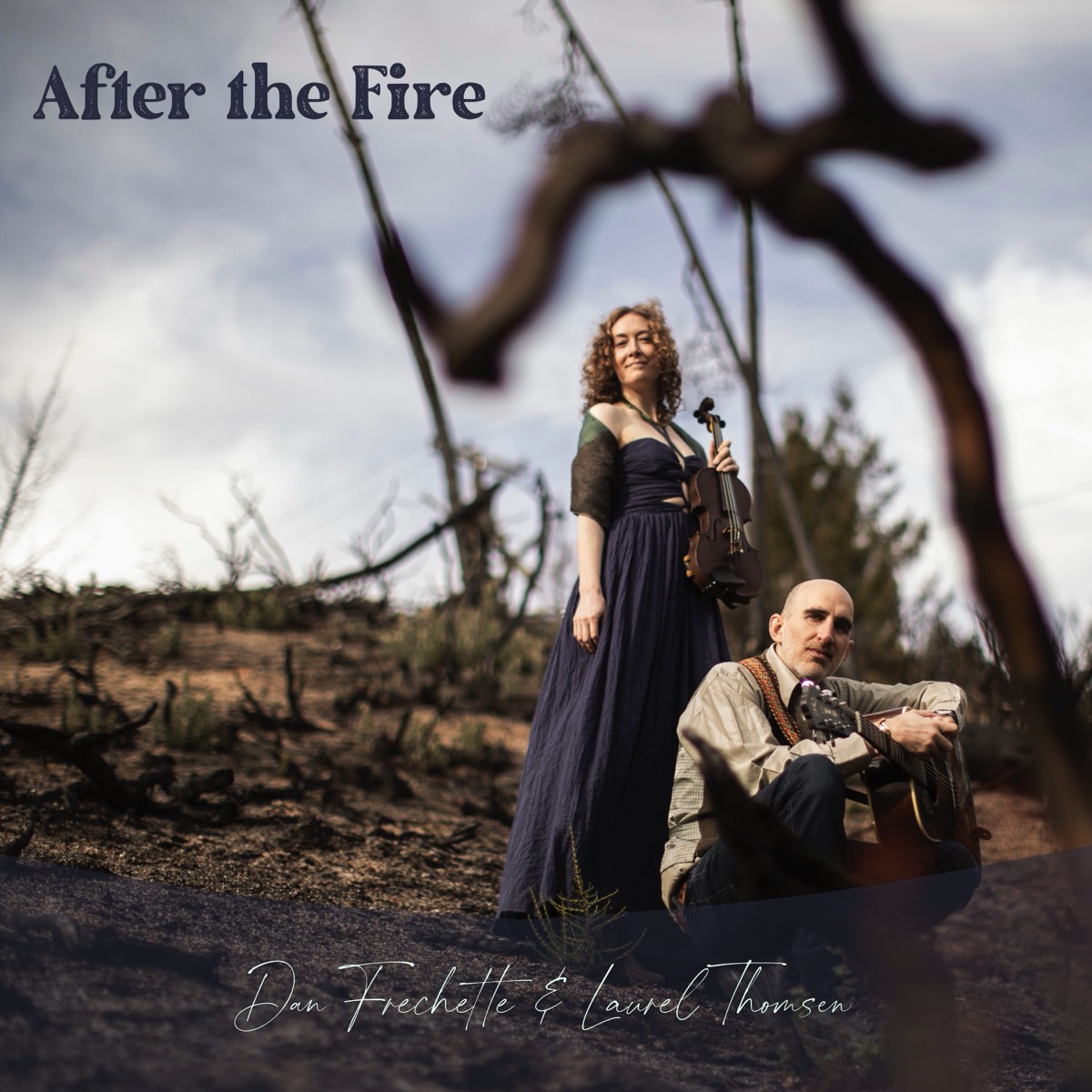I laughed when a colleague once told me: “It's all fun and games until someone gets a gig.” Whether it’s music you’ve enjoyed playing casually with friends, or an instrument or piece that hasn’t yet seen more than your practice room and maybe your teacher’s studio, as soon as a performance is on the horizon the pressure mounts and our enjoyment of playing can easily turn to stress. Ideally, we’d go into every rehearsal and performance feeling well prepared and excited to play with others, but sometimes we have to make due with few rehearsals and less than perfect preparation. Thankfully, there are a few ways to orient our individual practice to help get the most out of whatever time we do have to prepare.
In contrast to fiddle traditions which have been largely passed down by ear, many Classical teachers require that students sight read and decipher their parts, avoiding listening to any recordings, at least initially. In some circles, listening to recordings can be viewed as a cop out and only for “cheaters.” Sight reading and the ability to interpret sheet music are very important skills, but when preparing for rehearsals and performances with a Classical ensemble I find that I can speed up my preparation process quite dramatically by listening to recordings, and ideally, more than one version of any given piece for a sense of some contrasting interpretations. While individual interpretations of a group may vary, knowing how all the parts fit together, learning important cues, hearing how my part functions within the texture (am I melody, harmony, rhythm etc.), and knowing what other parts I might be playing along with, or echoing, or harmonizing with and supporting, cuts out a lot of basic questions I may have going into a first rehearsal of new material. Studying a score can also be quite helpful, but since you’ll be listening to the group and not just your own part while playing in the ensemble and while you perform (hopefully!), is it such a bad thing to practice listening to all the parts at home as well? I think that good sight reading, listening, and interpretation skills can and should all co-exist in your practice environment.
If I had to choose a single musical element that can make or break an ensemble situation, my vote would be rhythm. My second choice would be melody/intonation. Go figure that these are the first and second building blocks of music in general! I find that practicing with a metronome is crucial, especially for ensemble work and absolutely at times when there won’t be a lot of practice time with the group. While we might have a bit of rhythmic wiggle room at times as a soloist, as part of a section or ensemble we need to be tight and accurate. Even if the notes are played beautifully and well in tune, what good is it if a player comes in at the wrong time, is rushing ahead, or can't keep up?
Beyond the basic rhythms, we need to also ensure our articulation choices and dynamics match the group. These details can often only be worked out in rehearsal, but if a part will require a specific bowing, like martelé or spiccato, or a dynamic range we haven’t quite mastered with good tone, we need to prepare for these possibilities in our practice time at home.
Along with the rhythms, I also highly recommend practicing the rests! It’s tempting to skip the rests when practicing by ourselves, but counting can be tricky and no one wants to be the person taking a solo where there wasn't one intended. I like to place forward slash marks in my music, like the ones you see in a web URL, to help me more easily see and visually count the beats during tricky passages. I find these slashes especially helpful when counting rests, particularly when a part is syncopated or where there are a lot of ties. I’ll place these slashes up above the staff, out of the way of any bowings or fingerings and make sure they have a good tilt to them so I don’t mistake them as “1s.”
I also perform and do studio work with groups focusing on other genres, and with songwriters and tribute acts, like groups recreating a Beatles or Cat Stevens album which might have some string parts. In these cases I might be improvising, or arranging, or memorizing a part by ear from a recording. Especially when there's no sheet music, and sometimes not even a chord chart or lead sheet, the prep is very different than with Classical music. In these situations, playing along with recordings is often the only way I can practice at home.
If it’s a songwriter, I’ll request a rough recording as soon as possible. It doesn’t need to include everyone in the group who will be performing. I actually prefer something a bit sparse, at least initially, as I’ll mostly be listening to the chordal instrument and vocals. I’ve had experiences where a songwriter wants to send along their finished studio album, perhaps with a full band, overdubs, harmony vocals, sound effects etc.. While this is helpful for getting an overall sense for the style and feel they’re after, I find these recordings less useful for actually practicing along with than a casual recording on a computer or smart phone would be. I find it especially distracting to hear other lead instruments taking the solos I’ll need to fill in and unless they simply want me to learn those exact parts and recreate them, I find it hard to get into a creative mindset and hear a new potential part when the recording already sounds so complete.
For various other band situations and tribute acts where it might be mostly about recreating parts, I find it helpful to listen copiously to recordings and to play along with them. If I’m recreating another violinist’s part, I try to listen beyond the notes and rhythms, for the deeper elements of articulation, dynamics, tone, how notes are approached, the use of vibrato, etc.. I liken this process to being a method actress and trying to live the part for a while in order to get into character as much as possible.
For music situations where traditional tunes are being played, like Celtic, Bluegrass, etc., or where a song’s basic melody will provide the basis for improvisation and trading solos, sheet music or a lead sheet is usually available and the prep is usually about learning the basic tune, being able to play it consistently at performance speed, and then getting comfortable with developing it further on the fly. Traditional tunes can be altered with various ornaments and bowings, and sometimes rhythm and melody variations, while for a Folk, Jazz, Rock, or Blues standard I’ll need to be familiar with both the basic melody and the chord progression in order to take a solo and provide appropriate rhythm or harmony lines. I generally search YouTube for various examples to listen to and absorb, ideally in the same key we’ll be performing in. Recordings of a band rehearsal are always helpful for home practice later on.
For all these non-Classical ensembles, especially when there will be at least some element of arranging a new part or improvising, I find it helpful to sing/vocalize my ideas before I take them to the instrument. I’ve done a lot of prep for these kinds of situations while driving around in the car. Singing seems to create more memorable lines and hooks and when I don’t yet have a feel for a new song, singing helps me get into a pure, creative headspace more easily because I don’t have to worry about also navigating the technique of the instrument.
Once I do take a new song to the violin or viola, I usually pull the rough recording from the band or songwriter into GarageBand or another multi-track recording software choice and record about a dozen versions of potential solos and accompaniments, listening back as I go and developing my ideas along the way. Sometimes, a line I thought sounded and felt great in the moment, sounds a little overdone or out of place when I listen back. My orientation is always supportive, whether I’m taking a solo or backing up vocals or another lead instrument. I want to serve the music, the lyrics, the mood, and I want my parts to fit seamlessly, like they were always meant to be there. Recording myself and listening back is really the only way I can listen objectively and make sure everything I’m playing works.
Regardless of your preparation at home, we can never entirely know what it will be like to play in a group until the ensemble meets. And after rehearsing, it usually feels even a bit different when we get out on stage. Sometimes, not everything goes as planned and we have to be flexible in our musicianship and our attitude. If we stay centered and focused, and keep listening beyond our own sound to what's going on around us, we’ll prove to be an asset to any group and find it increasingly easier to move beyond the nitty gritty notes to create compelling performances.
Happy Practicing!

